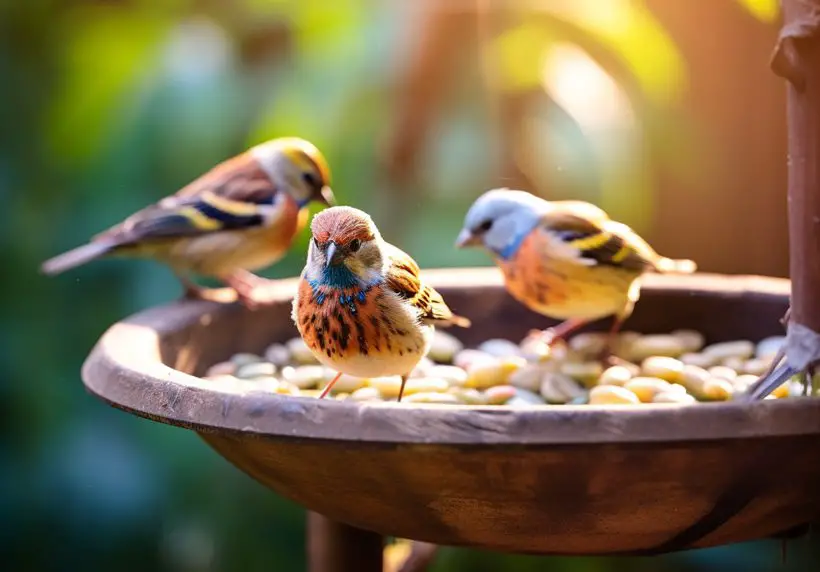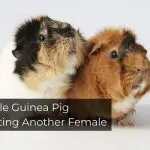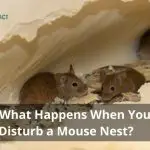How To Feed Birds Without Attracting Rats: 10 Easy Methods To Help You Out!
Birdwatching is a delightful hobby that brings a touch of nature’s beauty to your everyday life. However, as much as you enjoy inviting these feathered friends into your garden, there is always the potential that the bird feed can attract other unwanted companies like rats.
So, how to feed birds without attracting rats? You can do this by installing rodent-proof bird feeders, removing water sources, installing bird feeders on poles or elevated surfaces, and using high-quality bird food. You can also fill your feeders in the food bin, store bird seeds properly, and choose the right type of feeder, among others.
Read on to uncover more about these strategies that hold the key to a rat-free garden.
Does Bird Food Attract Rats?
The simple answer is yes. Bird food can attract rats to your garden. Rats, being opportunistic feeders, seize any chance to indulge in an easy meal. If you make your bird food readily available, they are likely to take advantage of it.

However, you should note that feeding birds itself isn’t a guaranteed invitation for rats. Sometimes, these rodents might already dwell within your garden, and the scent of bird food merely coaxes them out from hiding. Rats can inhabit your garden due to other issues, such as unattended rubbish.
How To Feed Birds Without Attracting Rats?
You can easily ensure that you still feed birds in your garden without attracting rats by following some simple strategies. These strategies include the following.

1. Install Rodent-Proof Bird Feeders
Invest in bird feeders equipped with ingenious mechanisms that discourage rats from accessing the food meant for birds. Weight-sensitive perches are a prime example.
These perches are designed to support the weight of birds while closing off under the heavier load of a rat.
You should also get a sturdy bird feeder that won’t fall from the bird’s weight. After all, if a bird were to knock the feeder down, it would cause the seeds to spill on the ground and attract rats.

2. Remove Water Sources
Rats are not only drawn to food but are also enticed by water sources. After all, unlike mice, who can survive longer, rats need water to survive. By eliminating standing water in your garden, you eliminate one of the key attractions for these rodents.
Ensure you repair leaky faucets and empty saucers, and regularly clean birdbaths to minimize water availability, making your garden less enticing to rats.
3. Elevate Bird Feeders
Opt for elevation when positioning bird feeders. Placing feeders on poles, posts, or other elevated surfaces creates a physical barrier that rats find challenging to overcome. As good as these rodents’ climbing abilities are, they are limited compared to their ground-level movements.

4. Use High-Quality Bird Food
The choice of bird food matters not only to the birds’ nutrition but also to deter rats. Select bird food blends with minimal filler content, like red millet, as birds will sift through the fillers and even drop them on the ground.
You should also select bird food without husks like black oil sunflower. It not only prevents the accumulation of discarded husks around feeders but also provides rats with fewer food options. Husk-free food minimizes the mess and potential attractions that can draw rats to the feeding area.
5. Fill Feeders Away from the Feeding Area
Filling bird feeders directly at the feeding area might seem convenient, but it’s a practice that could inadvertently lay out the welcome mat for rats. As you can easily spill seeds when filling the feeders. These scattered seeds create an open invitation for rats, drawing them closer to the actual bird feeder.
So, instead of filling feeders right at the feeding site, opt to refill them at a designated bin away from this area.
6. Properly Store Bird Seeds
Securely store bird seeds in airtight containers. The scent of open or spilled bird seed can act as a beacon for rats. By containing the aroma within sealed containers, you minimize the chances of attracting these rodents to the feeding area.
7. Choose the Right Feeder Type
Diverse feeder designs cater to various bird species while thwarting rats’ advances. Caged feeders are designed to allow smaller birds to access the food while preventing larger pests like rats from reaching it.
These feeders create a controlled feeding environment that prioritizes birds while deterring potential intruders. You should also use feeders made from metal, as rats cannot easily chew through it.
8. Maintain Clean Feeding Areas
You should conduct regular upkeep of the feeding area. Remove accumulated seed hulls, debris, and bird droppings to eliminate attractions that can lure rats. A clean environment benefits birds and reduces the chances of rodents finding your garden enticing.

9. Add a Baffle to Your Bird Table
A baffle is a cone-shaped guard or obstruction that can be a valuable addition to pole-mounted feeders or bird tables.
By placing baffles around the feeder’s pole or on the table itself, you will create a physical barrier that rats struggle to overcome. This added layer of protection enhances the rat-resistant qualities of your feeding setup.
10. Reduce Ground Cover
Tall grasses and shrubs can provide hiding spots for rats near the feeding area. Trimming or removing excess ground cover reduces the proximity of potential rat shelters, diminishing their presence near the bird feeders. This step reduces the chances of rats being drawn to your garden’s inviting atmosphere.
Tips To Help You Feed Birds Without Attracting Rats

Here are several tips that will help you ensure that rats do not get attracted to your bird feeds.
- Do not use platform trays: Platform trays can inadvertently create a comfortable feeding spot for both birds and rats. Opt for feeders that discourage rats.
- Do not place the feeders next to your house: Place feeders at a distance from your house, preventing rats from exploring closer to your living spaces.
- Vary feeder locations: Move feeders around your garden to avoid creating predictable feeding patterns that rats can exploit.
- Do not overfill your bird feeders: Avoid overfilling feeders to reduce the amount of spillage that can attract rats.
- Choose the right feeder pole: Use materials such as metal that rats can’t easily gnaw through, avoiding wood and PVC pipes that they might damage.
FAQs
Here are a few more related questions you might be interested in.
Q1: Are there specific bird foods that rats dislike?
Rats are mammals. Therefore, they have taste buds that can detect spicy food. Rats will usually avoid bird food that has pepper oil, as they are too spicy, but since birds cannot taste it, it does not affect them.
Q2: Will ultrasonic repellents keep rats away from bird feeders?
Ultrasonic repellents have mixed effectiveness, as rats can become accustomed to the sound. Additionally, a variety of birds are sensitive to them, so ultrasonic repellents are not the most viable solution.
Conclusion
Feeding birds in your garden is a rewarding endeavor that connects you with nature’s wonders. While concerns about attracting rats are valid, they need not deter you from enjoying this experience. Especially now that you know how to feed birds without attracting rats.
Implementing a combination of strategies, such as rodent-proof feeders, proper storage of bird food, and maintaining a clean feeding environment can significantly reduce the risk of rat infestations. So, go ahead – fill those feeders, savor the songs, and relish the colors while keeping unwanted pests at bay.




